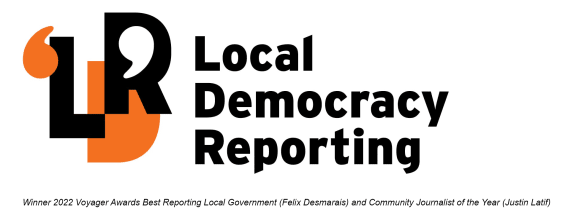
Photo: RNZ / Samuel Rillstone
National wants to scrap lower speed limits on highways, saying economic impacts should be considered as well as road safety.
The party recently vowed to make a sharp U-turn on 80kmh highway speed limits, returning them to 100kmh. However, the party said it would only increase speeds "if it's safe to do so".
Defending the move, National's transport spokesperson, Simeon Brown, claimed the road toll increased after speed limits dropped.
So is he right or do lower speeds save lives? Who sets the speed rules anyway? Local Democracy Reporting explains.

Why have speed limits been lowered?
Speed limits have been decreased under the Road to Zero campaign, which aims to cut deaths and serious injuries.
Limits on many highways have been reduced to 80kmh or 90kmh, while roads around schools are now 30kmh.
An estimated 4 percent of highways are now 80kmh, according to Waka Kotahi.
How did people react?

Photo: 123RF
The majority of New Zealanders said the 100kmh speed limit on the open road should be left as it was, according to a Waka Kotahi survey in December 2022.
About 20 percent said the speed limit should be raised and 8 percent said it should be lowered.
Local backlash has often been seen, with people complaining that speed limits were being lowered despite community opposition.
Wairarapa commuters were outraged when the speed limit on a major stretch of State Highway 2 was cut to 80kmh in January. The majority of about 1300 submissions were against the speed reduction.
The state highway connects Wairarapa to Wellington and the central and eastern North Island.
It is the first highway stretch that National said it would consider reversing back to 100kmh if elected.
Labour's candidate for Wairarapa, Kieran McAnulty, also wants the highway returned to 100kmh.
Who has the power to change speed limits?

Photo: RNZ / Screenshot
Currently, councils set speed limits for local roads and Waka Kotahi sets limits on state highways, after consulting the community and iwi.
Waka Kotahi can set a highway speed to 80kmh, but a local council can decide to keep neighbouring roads at 100kmh - which recently happened in Wairarapa.
The government also has a say. In 2022, the government introduced new rules requiring councils to implement speed plans that align with its Road to Zero strategy, which includes lower speed limits.
National said it would scrap the rules set in 2022 and replace them with a new set of guidelines.

National's transport spokesperson Simeon Brown. Photo: RNZ / Angus Dreaver
Brown said they would require authorities to set speed limits after considering safety impacts, travel time impacts, and the views of road users and the community,
National said it would initially spend $30 million over three years to reverse speed limit reductions on state highways and neighbourhood streets.
Is it true the road toll increased after speed limits dropped?
The road toll increased from 350 in 2019, when Road to Zero was introduced, to 374 in 2022. But the number of people killed on roads hovered between 318 and 350 in the years in between.
Waka Kotahi commissioned an independent review of the impacts of changing the speed limit on State Highway 5, between Rangitāiki and Esk Valley, from 100kmh to 80kmh in 2022.
Researchers found 34 crashes were avoided in the year, and the severity of crashes was reduced.
Travel time increased by up to 3.6 minutes for this 76km stretch of motorway, resulting in a travel time cost of $1.3m for the year.
The safety benefits - the cost of injuries and deaths on our roads - were valued at around $93m for the year. A fatality is considered to cost $12.5m.
Similarly, deaths and serious injuries on State Highway 6 between Blenheim and Nelson reduced by approximately 80 percent in the two years after speed limits were lowered in December 2020.
So why increase speeds?
National said speeding up traffic was not just about getting people where they wanted to go faster; but would boost productivity and economic activity.
What does Labour think?

Labour transport spokesperson David Parker. Photo: RNZ / David Parker
Labour leader Chris Hipkins recently signalled the government had already asked Waka Kotahi to reduce the scale of its proposed changes to speed limits.
The most high-risk roads should be the focus for lower speed limits, Labour said.
Labour transport spokesperson David Parker said speed reductions should not be widespread, but he was damning of National's stance.
"Labour's balanced approach to speed reductions saves lives while minimising inconvenience to drivers - in stark contrast to National's reckless and irresponsible policy"
Will National still consider safety?

Photo: RNZ / Rebekah Parsons-King
National put a large disclaimer in its policy announcement: It would reinstate 100kmh speed limits "where it is safe to do so".
"When evaluating a speed limit, if the economic benefits and the views of road users outweigh the safety impacts, these roads would be considered safe to increase speed limits," Brown said.
National would also invest in road infrastructure.
Brown said alcohol and drug use were the "number one contributing factor in fatal crashes", so they would increase alcohol breath testing and introduce legislation to roll out roadside drug testing.
If National is elected, more details are likely to be released on road speed plans - and on what they deem safe. There would be further community consultation before road speeds were increased.
- Local Democracy Reporting is Public Interest Journalism funded through NZ On Air





